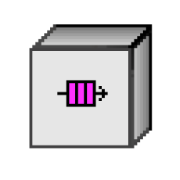-
Similar Content
-
- 3 replies
- 4,467 views
-
- 14 replies
- 19,143 views
-
Malleable VIs - Nested Malleables - Broken Class adaptation in Malleable VIs in 2019
By Ryan Vallieu,
- 3 replies
- 9,271 views
-
- 10 replies
- 9,861 views
-
- 4 replies
- 9,438 views
-






Recommended Posts
Join the conversation
You can post now and register later. If you have an account, sign in now to post with your account.